The concept of a traditional Japanese teahouse inspired the project located in Lower Austria. The building was designed as a contemporary interpretation of a teahouse that allows for a more diverse use. It serves as a place for drinking tea and observing silence and as a space for regression therapy for clients with the possibility for overnight stays.
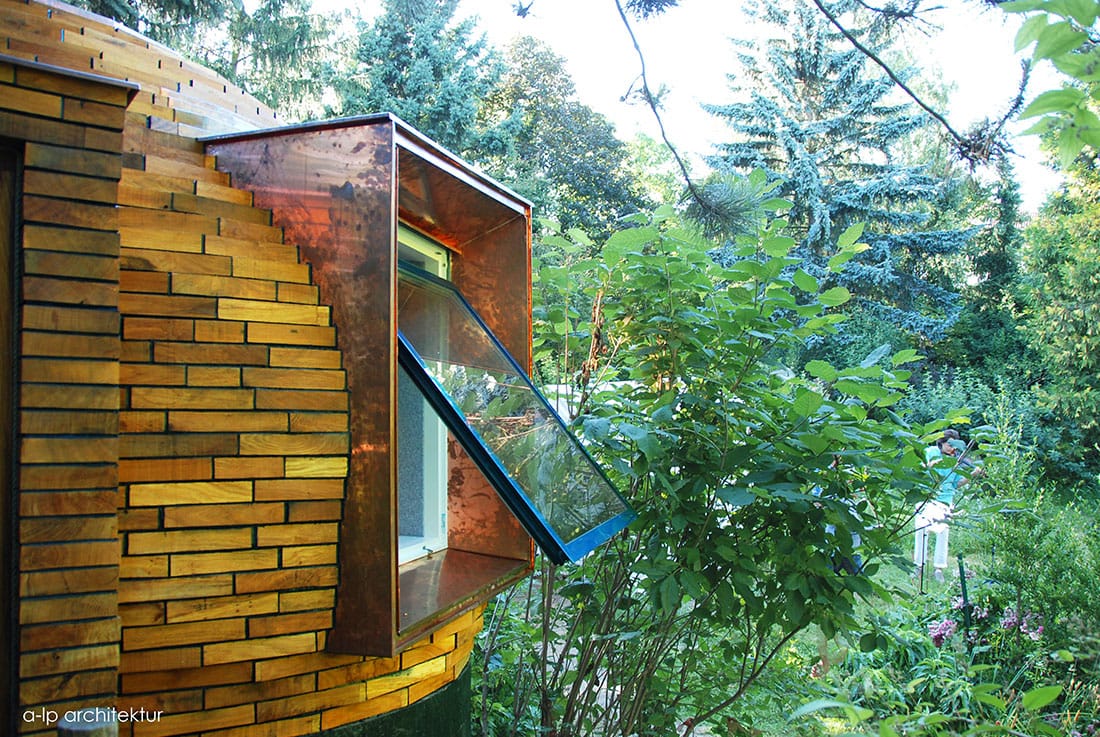
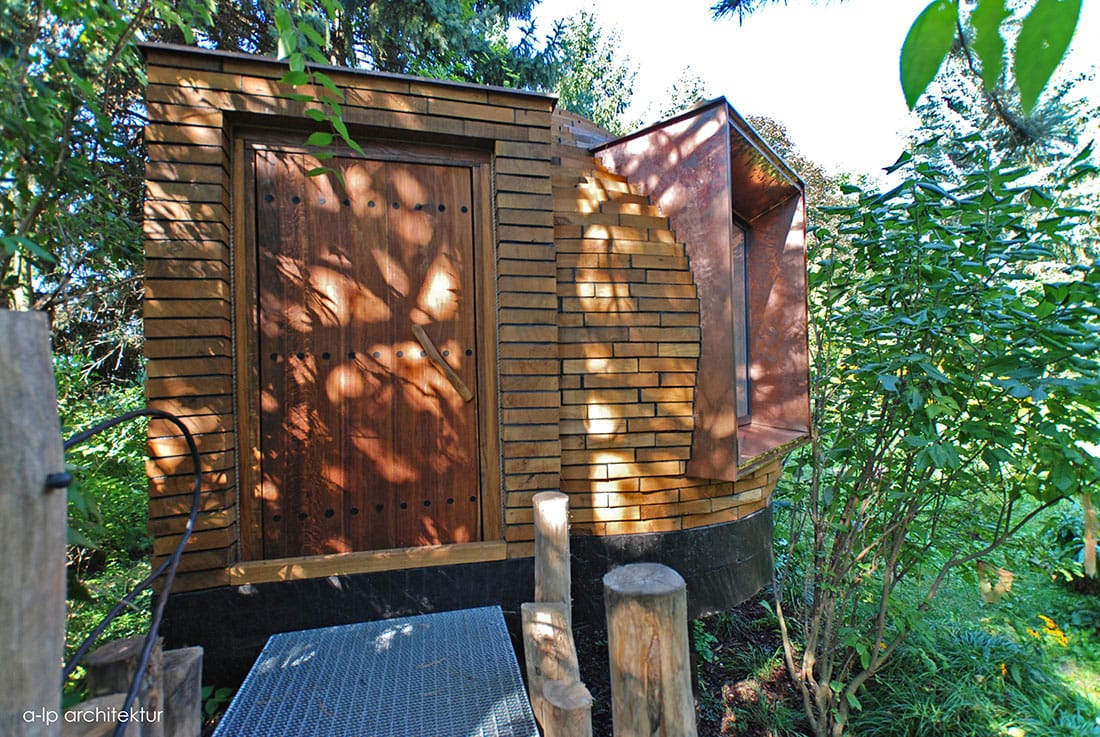
Four pillars, made out of tree trunks, elevate the organic structure from the ground and allow the vegetation to grow both under and around the building. The massive black base adds the feeling of stability and durability to the teahouse, while the rest of the building rises organically from the base. A ramp serves to access the building comfortably. It is made out of tree trunks, as traditionally used by wine farmers in Lower Austria, and separated from the teahouse by a small gap.
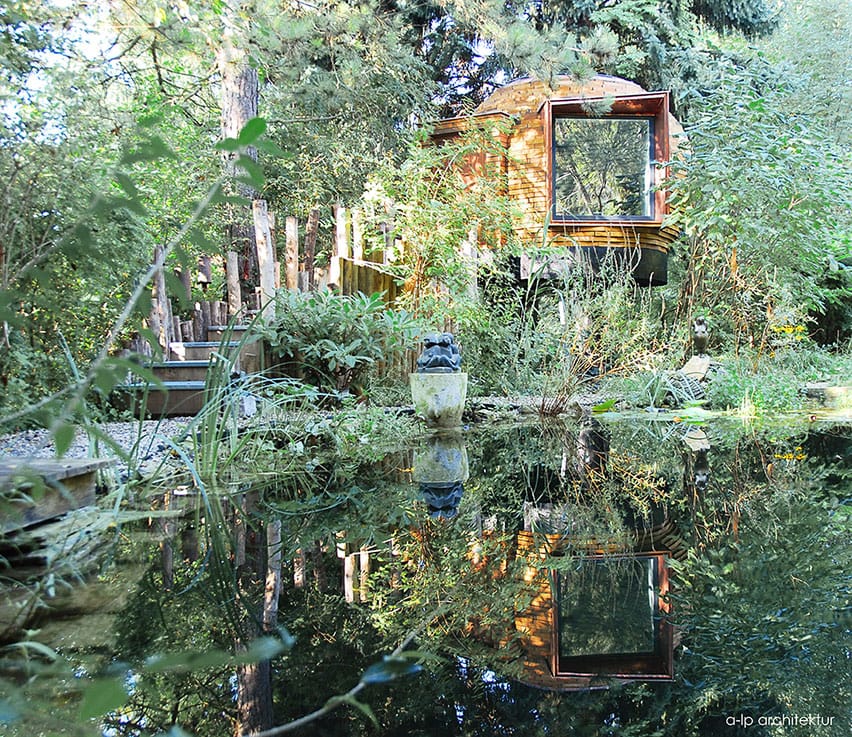
The low and narrow entrance of the teahouse opens up to the seemingly spacious interior. The inside features a protecting character like a cave or a uterus. An oval opening in the ceiling allows natural lighting to gleam into the building through painted glazing. For this purpose, a painting by the owner herself was printed on glass. The frame around the big square window serves as a piece of furniture inviting to sit down.
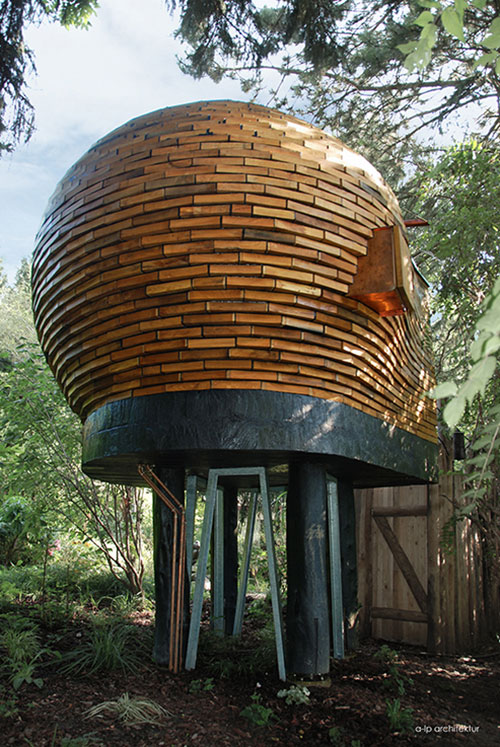
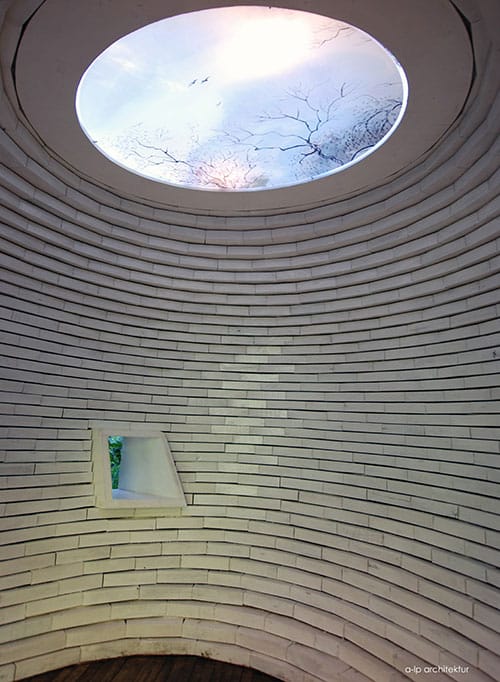
FILE
Authors of the story: a-lp architektur; Franz Leuthner, Claudia Pirchl
Year when the project started: 2016
Area: 10m²
Location: Austria
Photos: a-lp architetkur, DI Christine Leuthner


